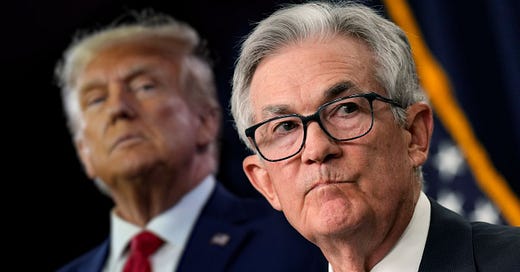U.S. stocks ended a volatile, holiday-shortened week mixed, as hopes for de-escalation in the Middle East helped offset weak economic data and cautious Fed signals. The Fed held rates steady and maintained its forecast for two cuts later this year, though it downgraded 2025 growth expectations. Retail sales and housing data came in soft, while bond yields fell on safe-haven flows. In Europe, equities declined as the BoE held rates and inflation eased; Switzerland and Norway surprised with cuts. Japan’s central bank stayed cautious, while China’s data remained mixed amid ongoing property sector weakness. In Latin America, Brazil hiked rates to a two-decade high, while Mexico prepared for further easing.
U.S. stocks finished a choppy, holiday-shortened week with mixed results. Markets reacted to headlines around tensions in the Middle East, but sentiment improved after President Trump mentioned a “substantial chance of negotiations” with Iran. Small caps led the gains, the Nasdaq rose modestly, the Dow stayed flat, and the S&P 500 slipped slightly. U.S. markets were closed Thursday for Juneteenth.
The Fed held rates steady at 4.25%–4.5% for a fourth straight meeting, as widely expected. Powell said uncertainty has “diminished but remains elevated,” and emphasized that the Fed is ready to act if conditions change. Updated projections show two rate cuts expected by year-end, but slower growth and higher inflation anticipated for 2025. On Friday, Fed Governor Waller hinted that cuts could begin as early as July, lifting markets early in the day.
May retail sales dropped 0.9%, the second monthly decline, mostly due to weaker auto sales. Still, the core control group (used in GDP) rose 0.4%, thanks to stronger demand for sporting goods and furniture.
Treasury yields dropped as investors sought safety amid geopolitical concerns and weaker economic data. Investment-grade bonds gained, while high-yield sentiment was more cautious.
Europe
European stocks declined on the week, with Middle East concerns and softer data dragging sentiment. The Bank of England held rates at 4.25%, but the vote was split, reflecting internal debate. Inflation eased to 3.4% in May, with services inflation falling to 4.7%, in line with the BoE’s forecast. Meanwhile, the Swiss and Norwegian central banks both surprised markets with rate cuts to support growth.
Germany saw a sharp improvement in investor sentiment, helped by a new tax relief package. But France’s manufacturing confidence fell further below trend, with weak order books and flat output expectations. The eurozone’s current account surplus also narrowed sharply.
Japanese markets ended the week higher, even as tensions abroad rose. The BoJ kept rates unchanged and reaffirmed its slow approach to bond tapering, wary of spooking markets. Inflation rose slightly in May, mostly driven by food. On the trade front, Japan and the U.S. failed to reach a tariff deal at the G7 summit, raising the stakes ahead of the July deadline.
In China, retail sales surprised to the upside, but industrial output and investment missed forecasts. Property data remained weak, with new home prices falling the most in seven months—a sign that Beijing’s earlier stimulus is losing steam.
Other markets
Brazil’s central bank raised rates to 15%, the highest in nearly two decades, as it continues its inflation fight. It was the seventh straight hike, and officials signaled a pause to assess the impact.
In Mexico, stocks declined as Banxico is expected to cut rates by another half-point at its June 26 meeting—its eighth cut since last August. GDP forecasts were revised lower, but policymakers remain confident that a recession can be avoided, despite growing pressure from U.S. tariffs.









